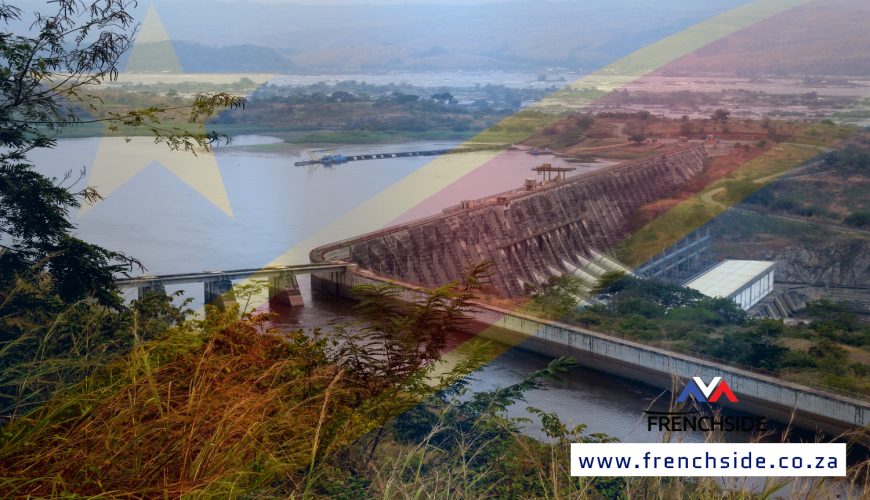The construction of the Inga Dam has been underway since 1995, but the lack of progress and lack of transparency has led to controversies surrounding the project. The Grand Inga dam is a series of 6 hydroelectric power dams. If it is a success it will be the largest hydroelectric project in the world, surpassing China’s Three Gorges Dam which currently is the largest hydroelectric project. The first and second instalment of the project (Inga I and Inga II) was built by the Government of DRC in 1972 and 1982. There are controversies around The Great Inga Dam in DRC, this has not stopped the third phase (Inga III) from taking place, with the ultimate design and size being a subject of significant debate. Three significant challenges surrounding the Great Inga Dam and their implications for the project’s future will be discussed in light of the project’s mixed reception.
The Great Cost of the Inga Dam
As there is no clear indication of a return on the construction investment, the project’s entire budget raises suspicion. This is because the Great Inga Dam, is estimated to cost over R1.3-trillion and part of the budget has been spent on instalments I & II which only have the capacity to produce 1 775 Mega Watts.
Criticism over the cost of Inga III is raised by the inconsistent financing that has been granted and retracted. This is because on July 25, 2016, The World Bank, suspended its funding because according to them, “The DRC’s decision to take the project in a different strategic direction to that agreed between the World Bank and the Government in 2014”. On March 20, 2014, The World Bank’s Board of Directors authorised a $73-million budget, and at the time of suspension, approximately 6% of total project financing had been distributed. The African Development Bank (AfDB) approved a $68-million grant and later withdrew its funding. Then in 2020 Actividades de Construcción y Servicios (ACS), one of the top construction corporations in the world followed the line of investors that hesitated with their funding. The controversy around The Great Inga Dam in DRC is investors’ constant withdrawals can indicate that the project has flaws. It is safe to claim that the investors withdrew because they believed they could not gain a positive return on their investments.
South Africa’s generous amount towards the project raises concern about the Inga III budget. In August 2014 South Africa signed the Grand Inga Treaty that provides the framework for the facilitation of power generation and delivery from the Inga site to the border between the DRC and Zambia. The treaty made South Africa’s involvement official but raised some eyebrows as it will be financing R204-billion for the project. This was a questionable move as Eskom (South Africa’s electricity utility) is currently in debt, and South Africa can use the funds to address Eskom’s shortcomings since the nation has been facing electrical issues for over 15 years. South Africa funding another project when their electricity utility is failing to provide consistent electrical services sparks corruption speculations as the investment can finance South Africa’s power issues back to health instead. This proves that there is controversy around the Great Inga Dam in DRC.
The Controversy around The Great Inga Damn in DRC is its large budget, even though a lot of money has previously been spent on the construction of the project nothing has been achieved. Since the project aims to supply 40 000 megawatts to the Southern Africa Power Pool, parts of southern Africa still struggle to get access to power. With South Africa’s plans to import power from Inga III, the project continues to cause suspicions because this would cost Eskom more than R10 billion per year. The result of R10-billion will most likely be paid by ordinary South Africans in the form of higher tariffs or government subsidies. This sparks corruption speculations because financially that would be a burden on South African citizens.
The Controversy Around Inga Dam in DRC: Population Displacement
Another factor that deems the Great Inga Dam controversial is that the construction of Inga I and Inga II also physically displaced many people out of their communities. This is controversial because the project aimed to improve the communities’ quality of living but, instead is causing suffering amongst communities. International Rivers back this up in their article Community History of Inga I & II, that six settlements were forcibly relocated in the 1960s and 1970s in order to create the Inga rapids hydropower plant. Despite decades of claiming compensation, they have never received payment. A temporary workers’ camp, Camp Kinshasa, was built in the Inga concession region during the first instalment of construction. Today, the consequences of the Inga Dam construction have up to 75 000 people living in a remote and inaccessible hilltop camp for displaced people in the province of Ituri living in “hellish conditions”. Inga has been displacing people for years and failing to place them in appropriate houses, which is problematic and corruption-like behaviour all just to fund a dam that has yet done nothing for the community.
The Controversy Around Inga Dam in DRC: Environmental Burden
The Great Inga Dam is causing serious disruptions in already improvised settlements by creating a harmful environment for members of the community. This is because The Great Inga Dam has received major funding but fails to make a return on investments as communities in Kinshasa still do not have access to electricity. At the beginning of 2022, customers were electrocuted at Kinshasa’s Matadi-Kibala food market after a high-voltage power cable was disconnected, and its exposed live end cable landed in a water-filled ditch. This news was deemed controversial because there were members of the community who were expected to gain from the Great Inga Dam but instead were electrocuted while they had no access to power in their homes.
The Inga Dam is problematic because of its apparent burden on the natural environment. Though Hydropower projects are often presented as a green renewable energy option, research shows that dams can cause negative impacts on the environment. The Inga Dam construction will continue to cause deforestation as a result of cutting down a significant percentage of the forest to build 3 100 km of transmission lines. The flooding of the Bhudi valley due to the passage of the Congo River to the Inga Damn will result in the loss of both aquatic life and agricultural land. As the Congo River is home to at least 700 fish species and has the biggest diversity of freshwater species after the Amazon, this will result in a loss of biodiversity. As biodiversity feeds the population of Kinshasa and forests regulate clean air and provide oxygen, Inga III is destroying instead of developing, for this reason, Inga Dam is an issue.
The Inga Dam project is questionable because it is ignoring its other renewable resources that could produce energy. As there are more environmentally friendly ways to provide electricity to communities that are power insecure. Solar, wind, geothermal, and biogas are abundant alternative energy sources in the DRC. The DRC is located in a very high-level sun belt, which has significant solar energy potential. As a result, installing solar panels is now feasible across much of the nation. Ignoring the fact that this route of renewable energy could save money raises the credibility of the construction of the dam.
The Great Inga Dam’s concept is a considerate thought for the development of the southern parts of Africa. Unfortunately, despite the project’s seclusion, the data given suggests that communities receive zero benefits. South Africa’s investment seems stable but fails to benefit South African citizens. The lack of long-term investors raises eyebrows and shows flaws in the project. The construction does not serve the value of environmental preservation as DRC can make use of their renewable resources to provide power to communities that have struggled with access to power for years. The greatest Controversy around the Grand Inga Dam in DRC is communities in Kinshasa have been evacuated and are currently living in poor conditions and have never benefited since the project began construction constructed 1972. The facts shown validate the worry when it comes to The Great Inga Dam and shows that all involved in the project should go back to the drawing board.
About Frenchside Translation and Interpreting Services
Frenchside is a multilingual translation agency with a track record of high-quality translation for the Engineering and Energy sector. For over 11 years, our translation services have helped corporate clients in South Africa build deeper relationships with their counterparts around the world. We work in French, Portuguese, Spanish and German languages. For further information about certified document translation services please contact us at 012 348 3134 or e-mail us at info@frenchside.co.za and we’ll be more than happy to talk with you or answer any questions you may have







